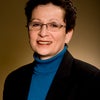In late October, Fran Arnold received the 2017 Achievement Award from the Society of Women Engineers. Dr. Arnold is a true STEM (science, technology, engineering, and mathematics) woman superstar – she pioneered enzyme evolution methods or “directed evolution.” In addition, in a very rare occurrence, she has been elected to membership in each of the National Academy of Sciences, the National Academy of Engineering, and the National Academy of Medicine (formerly the Institute of Medicine). Dr. Arnold has also received the National Medal of Technology and Innovation and has been inducted into the National Inventors Hall of Fame. She joins a group of STEM women superstars whose contributions opened new fields of endeavor. Match the woman with her accomplishment:
_____ 1. Her work has led to an understanding of how the body processes food and has been used to develop treatments for diabetes and other diseases.
_____ 2. Everyday we benefit from her contributions to the field of industrial engineering evident in our refrigerators, washing machines, and kitchen design.
_____ 3. Her work confirmed the existence of dark matter in the universe, contributing to the understanding of our world.
_____ 4. She is considered the founder of the field of pediatric cardiology;“blue babies” don’t die anymore because of her work.
_____ 5. Smartphones and laptop computers depend on our ability to speak to computers in human languages; her computer compiler enabled that to occur.
A. Helen Brooke Taussig
B. Gerty Cori
C. Lillian Moller Gilbreth
D. Admiral Grace Murray Hopper
E. Vera Rubin
Known as the founder of the field of pediatric cardiology, Helen Brooke Taussig discovered that “blue babies” had a leaking septum and an undeveloped artery leading from the heart to the lungs. As a cardiologist, she suggested the procedure to a surgeon and it was first conducted in 1944. Today the condition that blue babies used to die from is corrected by the Blalock-Taussig operation, which is used worldwide. Elected to the National Academy of Sciences in 1973 (25 years after Blalock), Taussig became one of the first full professors at Johns Hopkins University (1959) and received the Lasker Award in 1954. Taussig has been inducted into the National Women’s Hall of Fame and received the Presidential Medal of Freedom from President Lyndon Johnson in 1964.
Advances in the treatment of diabetes and many other diseases were dependent on the discoveries of Nobel Laureate and National Academy of Sciences member (1948) Gerty Cori. Cori and her husband established the cycle of carbohydrates – how our bodies process food to convert it into the energy. Today, that cycle is referred to as the “Cori cycle.” For this work, they received the 1947 Nobel Prize in Physiology or Medicine. She also worked extensively with enzymes which has impacted many modern medical discoveries. Although her husband had been explicitly told that his career would suffer if he collaborated with his wife, they were welcomed as a pair to Washington University in St. Louis, Missouri where they both prospered. Cori has been inducted into the National Women’s Hall of Fame.
We all benefit daily from the efforts of the co-founder of the field of industrial engineering, Lillian Moller Gilbreth. Although most famously known as the mother of twelve in the original Cheaper by the Dozen and Belles on Their Toes books and movies, our refrigerators, washing machines, trash cans, and kitchens benefit from her work. She introduced the butter tray and egg dish to the refrigerator, the wastewater hose to the washing machine, and the foot pedal-operated trash can. She focused on the kitchen triangle – ensuring that kitchens were designed to minimize the distance traveled between the sink, the refrigerator and the stove. Gilbreth also was instrumental in what today we call career interest tests – matching a person’s interest to her or his career – as well as to what we call ergonomics – making sure that one’s job does not adversely impact one’s body. The first woman elected to the National Academy of Engineering (1965), Gilbreth has been inducted into the National Women’s Hall of Fame.
When you use your smartphone or your laptop or your tablet computer, you are benefitting from the contribution of Admiral Grace Murray Hopper. Elected to the National Academy of Engineering (1973) and a recipient of the National Medal of Technology (1991), Admiral Hopper invented the computer compiler – the software that allows us to talk to computers in human languages and translates our languages into the zeros and ones that a computer understands. Her National Medal citation reads “For her pioneering accomplishments in the development of computer programming languages that simplified computer technology and opened the door to a significantly larger universe of users.” Admiral Hopper also loved to take credit for finding the first computer bug; it was a moth that had gotten stuck in one of the computer relays. She has been inducted into the National Women’s Hall of Fame.
Through her work on galaxy rotation, astrophysicist Vera Rubin confirmed the presence of dark matter in the universe. This significant change in how the universe is viewed has been called a “Copernican-scale change in cosmological theory.” Rubin received the National Medal of Science in 1993 for “her pioneering research programs in observational cosmology which demonstrated that much of the matter in the universe is dark, and for significant contributions to the realization that the universe is more complex and more mysterious than had been imagined.” Elected to the National Academy of Sciences in 1981, Rubin was a strong advocate for women in science and known as a mentor to women astronomers.
Learn about more she-roes and celebrate amazing women. These STEM women superstars are among the more than 850 women profiled in the book Her Story: A Timeline of the Women Who Changed America. I am proud to tell women’s stories and write women back into history. I stand on their shoulders.
(Answers: 1-B, 2-C, 3-E, 4-A, 5-D)
